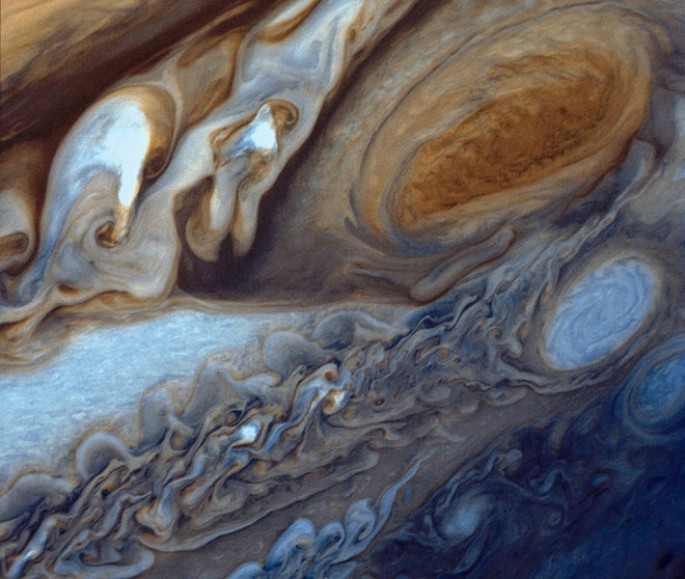The famous, mysterious red spot seen on Jupiter's upper atmosphere consists of a massive storm system that is thrice as wide as our planet, and in this new discovery, this colossal storm spot is heating up the gas giant's atmosphere, with temperatures hundreds of degrees warmer compared to any region on the planet.
Using infrared light emitted by Jupiter, scientists were able to observe and obtain temperature measurements from an altitude of 500 miles above its cloud tops. Researchers were surprised to discover how these temperatures are significantly higher since the sun is distant enough to warm up this region.
According to James O'Donoghue from Boston University, there are confirmed maximum temperatures in high altitudes directly above the red spot which can be considered as a major clue.
Astronomers first recorded the mysterious, massive red spot on Jupiter in 1831 and has ever since known as the Great Red Spot, however, it was first observed and identified by astronomer Giovanni Cassini in 1665.
What's inside the Great Red Spot? Raging hurricane systems where winds and gases can travel up to 425 miles per hour, as wind cycles need six days to complete a single revolution.
According to co-author of the study, Luke Moore of Boston University, the great red spot is also considered as a crucial source of energy that heats up the upper atmosphere of Jupiter, however there is still no evidence about its effects from higher temperatures in high altitudes.
Scientists now conclude that this mysterious, red spot on Jupiter can apparently produce acoustic energy waves, as these waves vibrate in the same direction that they travel, ultimately heating up the upper atmosphere.
This new study is published in the journal, Nature.




























